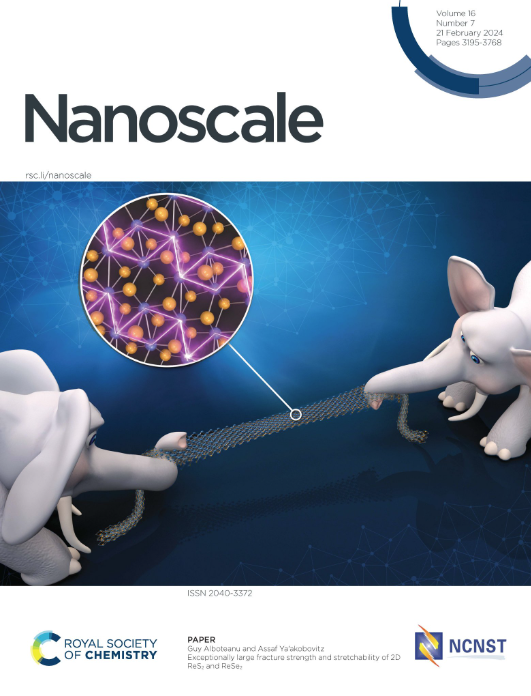Biomimetic Fe (III)- Metal-Organic Framework nanosphere-based dual modal probe for aqueous and intracellular sensing of Nicotine and its metabolite Cotinine
IF 5.8
3区 材料科学
Q1 CHEMISTRY, MULTIDISCIPLINARY
引用次数: 0
Abstract
Integration of novel biocompatible nanostructures as effective sensing platforms is still of great significance for robust and rapid analysis. Herein, a novel Iron (III) metal-organic framework (Fe-MOF) nanospheres with the formula [Fe3(µ3–O)(C7O2H5)6(COO)2(H2O).2DMF] was successfully developed and characterized by Single crystal X-ray diffraction (SXRD) studies. Interestingly, fluorescence studies reveal that Fe-MOF is an effective multi-functional turn-on sensor with a blue shift for nicotine and cotinine with a low detection limit, notable recyclability, and good anti-interference ability. This material satisfies essential biological criteria by being minimally toxic to living cells (L929 and A549 cell line) and retaining structural stability in water across a broad pH range (3-11) enabling its successful application in biological imaging of nicotine and cotinine in living cells. To our knowledge, this is the first report of fluorescence enhancement for cotinine detection with a metal-organic framework. Density functional theory (DFT) calculations and ultraviolet-visible (UV–vis) absorption studies have elucidated the plausible sensing mechanism. This study significantly expands the potential of Fe-MOF in sensing and biological applications.仿生铁(III)-金属-有机骨架纳米球双峰探针用于尼古丁及其代谢物可替宁的水内和细胞内传感
集成新型生物相容性纳米结构作为有效的传感平台对于鲁棒和快速分析仍然具有重要意义。本文制备了一种新型铁(III)金属有机骨架(Fe-MOF)纳米微球,分子式为[Fe3(µ3-O)(C7O2H5)6(COO)2(H2O)]。成功制备了2DMF],并通过单晶x射线衍射(SXRD)对其进行了表征。有趣的是,荧光研究表明,Fe-MOF是一种有效的多功能开启传感器,对尼古丁和可替宁具有蓝移,检出限低,可回收性显著,抗干扰能力好。这种材料对活细胞(L929和A549细胞系)的毒性最小,并且在很宽的pH范围内(3-11)保持结构稳定性,从而满足基本的生物学标准,使其成功应用于活细胞中尼古丁和可替宁的生物成像。据我们所知,这是第一次用金属-有机框架荧光增强可替宁检测的报道。密度泛函理论(DFT)计算和紫外-可见(UV-vis)吸收研究已经阐明了可能的传感机制。这项研究极大地拓展了Fe-MOF在传感和生物领域的应用潜力。
本文章由计算机程序翻译,如有差异,请以英文原文为准。
求助全文
约1分钟内获得全文
求助全文
来源期刊

Nanoscale
CHEMISTRY, MULTIDISCIPLINARY-NANOSCIENCE & NANOTECHNOLOGY
CiteScore
12.10
自引率
3.00%
发文量
1628
审稿时长
1.6 months
期刊介绍:
Nanoscale is a high-impact international journal, publishing high-quality research across nanoscience and nanotechnology. Nanoscale publishes a full mix of research articles on experimental and theoretical work, including reviews, communications, and full papers.Highly interdisciplinary, this journal appeals to scientists, researchers and professionals interested in nanoscience and nanotechnology, quantum materials and quantum technology, including the areas of physics, chemistry, biology, medicine, materials, energy/environment, information technology, detection science, healthcare and drug discovery, and electronics.
 求助内容:
求助内容: 应助结果提醒方式:
应助结果提醒方式:


